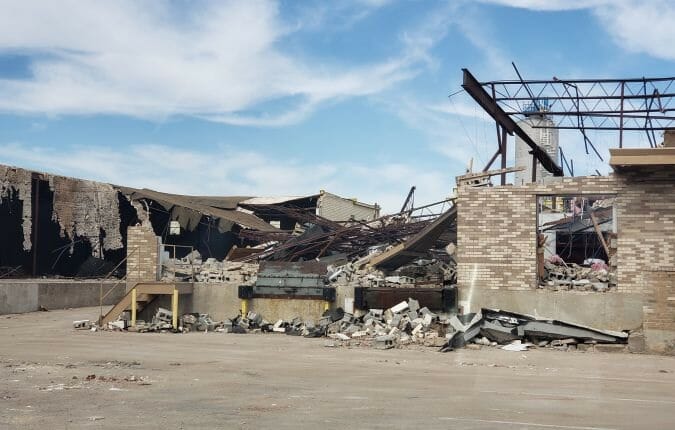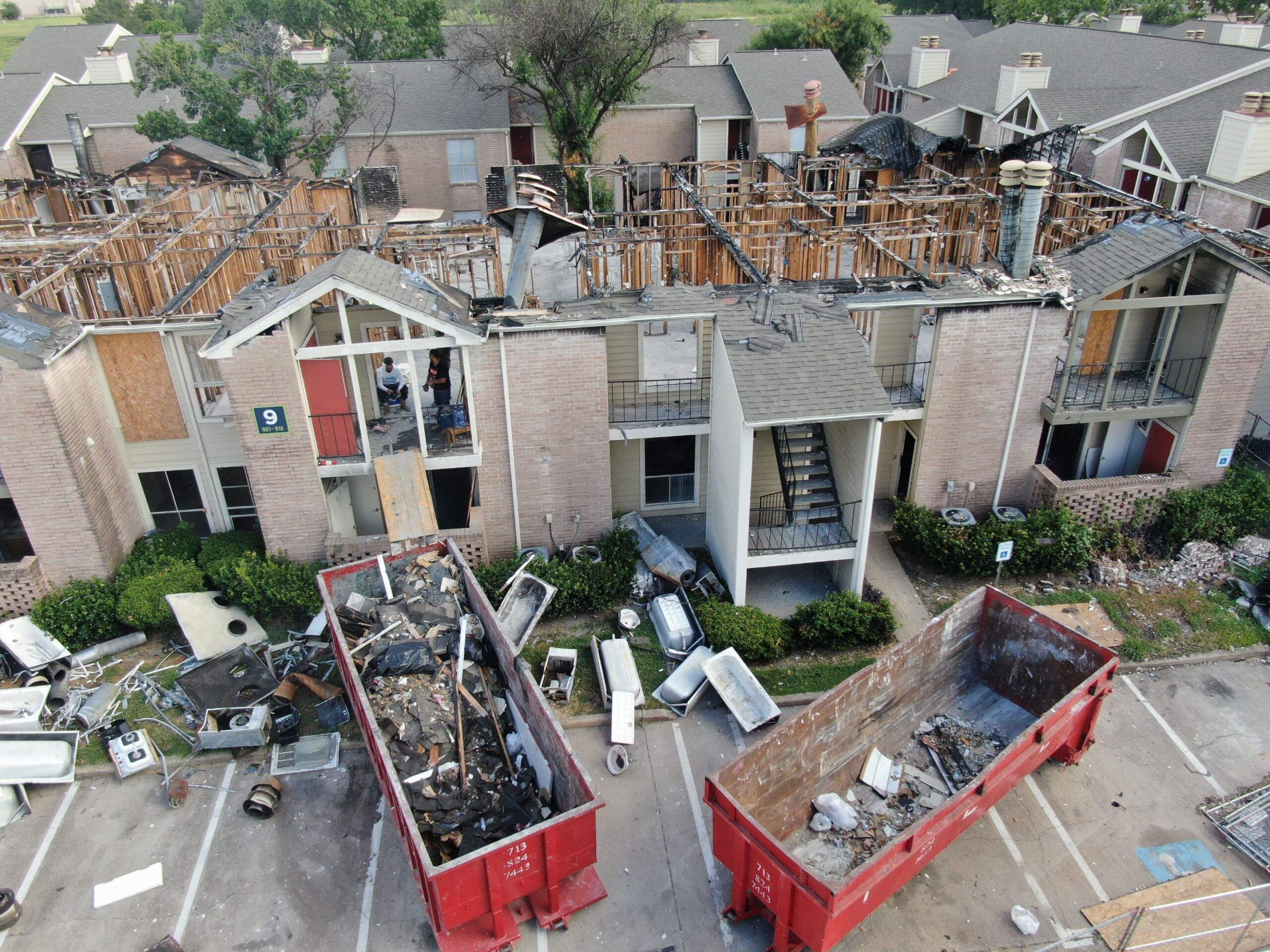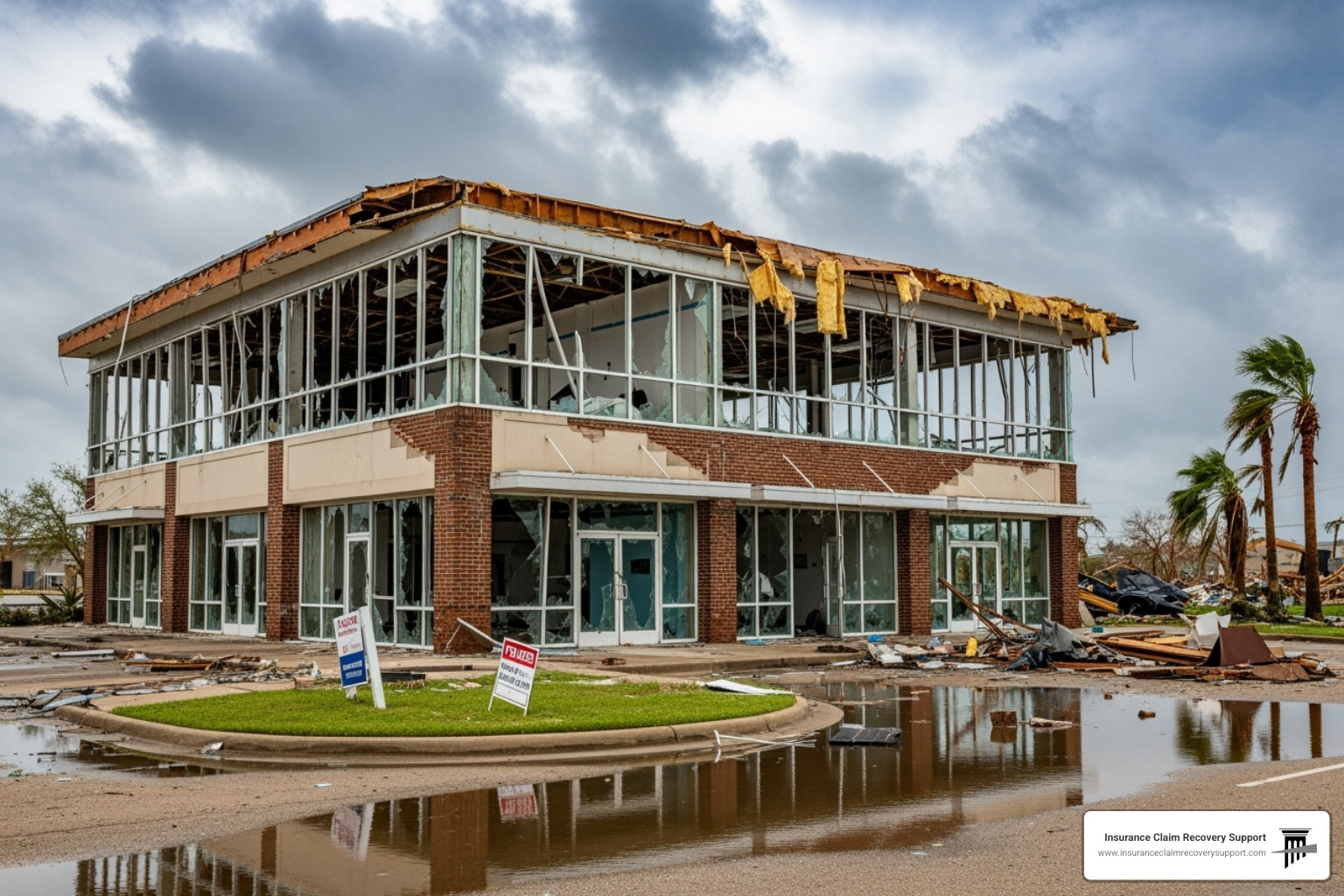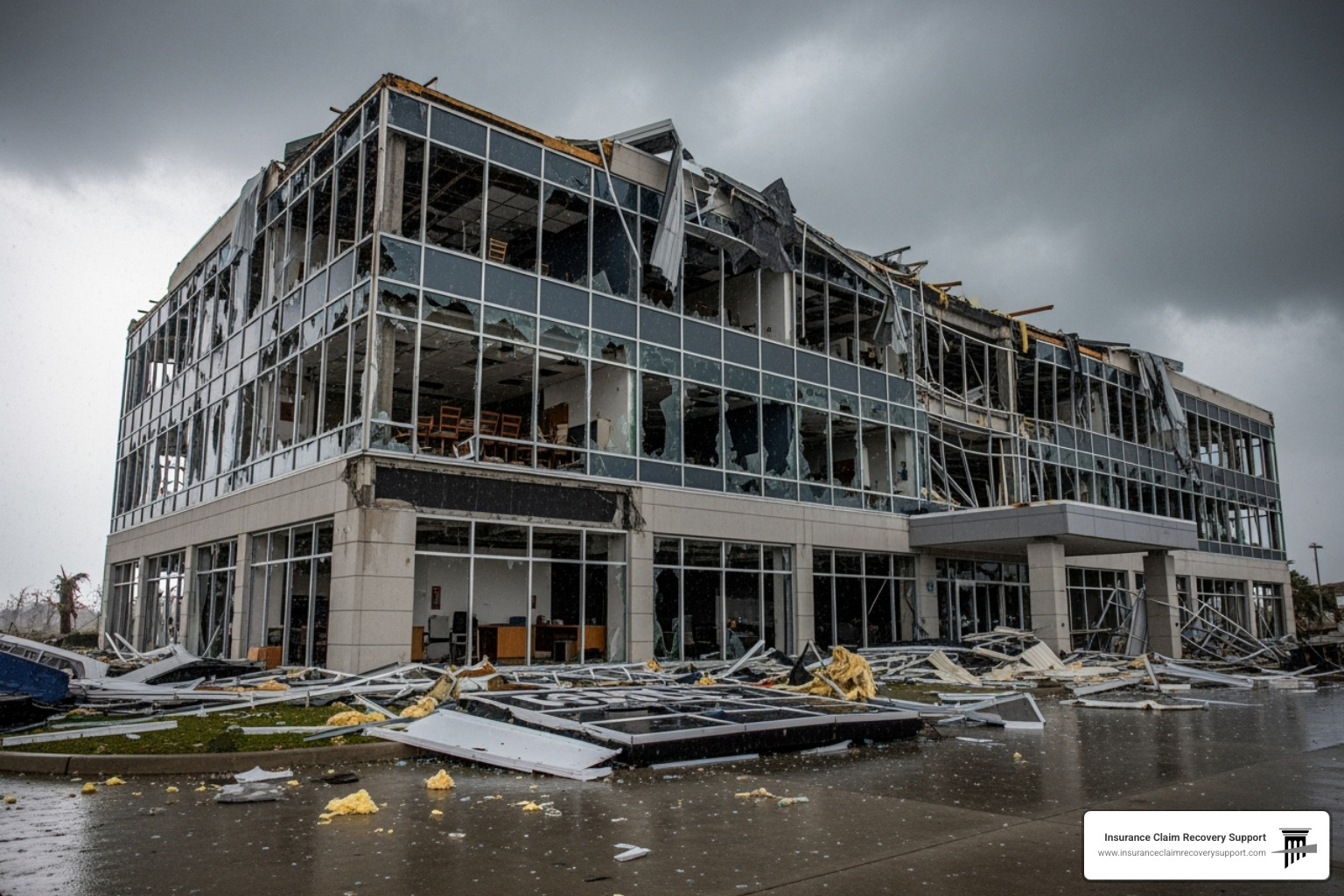Weathering the Storm: Your Guide to Navigating Storm Damage Insurance Claims
When disaster strikes and your property suffers storm damage, navigating the storm damage insurance claim process can feel overwhelming. Understanding the steps involved is crucial to ensure you receive a fair settlement for your losses. Here’s a quick breakdown of what to do:
- Ensure Safety: Prioritize the safety of yourself and your family.
- Document Damage: Take photos and videos of all damage.
- Contact Your Insurer: Report the damage as soon as possible.
- Make Emergency Repairs: Prevent further damage but wait for insurer approval for major repairs.
I’m Scott Friedson, the CEO of Insurance Claim Recovery Support. With over a decade of experience settling hundreds of millions in property damage insurance claims, I’m here to help you through the complexities of the storm damage insurance claim process to ensure you receive the settlement you deserve.

Storm damage insurance claim glossary:
– denied storm damage insurance claim
– how to file an insurance claim for storm damage
– hail damage roof replacement
Immediate Steps After Storm Damage
Ensure Safety First
Your safety and your family’s safety come first. If the storm has caused significant damage, evacuate your home and move to a safe location. Avoid entering areas with potential hazards like downed power lines, exposed electrical wiring, or structural instability.
If there’s any immediate danger, contact emergency services right away. Your home is replaceable, but your life is not.
Document the Damage
Once it’s safe, start documenting the damage. Use your smartphone or camera to take clear photos and videos of all affected areas. Capture both wide shots and close-ups to provide context and detail.
Make a list of damaged items and note their approximate values. Gather any receipts or proof of purchase you can find. This documentation will be crucial for your storm damage insurance claim.

Contact Your Insurer
Reach out to your insurance company as soon as possible to report the damage. Provide them with an overview of the situation and follow their guidance on the next steps.
Here’s what to do:
- Call Your Insurer: Report the damage and get a claim number.
- Assign an Adjuster: The insurance company will assign an adjuster to assess the damage.
- Schedule a Visit: Arrange for the adjuster to visit your property, either virtually or in person.
Keep records of all communications with your insurer, including names, dates, and details of conversations. This will help if any disputes arise later.
Make Emergency Repairs
While waiting for the adjuster, you can make temporary repairs to prevent further damage. This might include covering broken windows or patching a leaky roof.
Important: Keep all receipts and document the repairs with photos. Your insurance company may reimburse these costs, but only if you have proof.
Do not make permanent repairs until the adjuster has assessed the damage and you have reached an agreement on the cost of the repairs.
By following these immediate steps, you can ensure a smoother storm damage insurance claim process and a quicker path to recovery.
Next, we’ll dive deeper into understanding your insurance policy to know exactly what is covered.
Understanding Your Insurance Policy
Review Your Policy
Start by reviewing your homeowners insurance policy. This document is crucial for understanding what types of storm damage are covered and what your coverage limits are. Look at the declarations page, which provides a summary of your coverage, including limits and deductibles.
For instance, some policies cover the replacement cost of damaged items, while others reimburse only the actual cash value. Replacement cost means you’ll get enough money to buy a new item similar to the one that was damaged. Actual cash value accounts for depreciation, so you’ll get less money because the item was used.
If you’re unsure about any details, contact your insurer or agent for clarification.
Know Your Deductible
Your deductible is the amount you have to pay out of pocket before your insurance kicks in. For storm damage, you might have different deductibles depending on the type of storm.
-
Windstorm Deductible: This is often a percentage of your home’s insured value. For example, if your home is insured for $250,000 and you have a 2% windstorm deductible, you’ll need to pay the first $5,000 of damage.
-
Hurricane Deductible: Similar to the windstorm deductible, the hurricane deductible can also be a percentage of your home’s insured value. This is common in hurricane-prone areas like Florida and Texas.
Understanding your deductible is critical because it affects how much you’ll pay out of pocket before your insurance covers the rest.
Coverage Types
Your insurance policy will generally offer two types of coverage: replacement cost and actual cash value.
-
Replacement Cost: This coverage pays for the cost of replacing damaged items with new ones of similar kind and quality. For example, if a storm destroys your 5-year-old TV, replacement cost coverage will pay for a new TV of similar quality.
-
Actual Cash Value: This coverage pays what the item was worth at the time it was damaged, factoring in depreciation. Using the same example, actual cash value coverage would pay you the depreciated value of the 5-year-old TV, which would be less than the cost of a new one.
Knowing the difference between these two types of coverage can help you better understand what to expect when filing a storm damage insurance claim.
Understanding your insurance policy can make a significant difference in how smoothly and quickly you can recover from storm damage. Next, we’ll walk through the steps for filing your claim.
Filing Your Storm Damage Insurance Claim
Filing a storm damage insurance claim can be daunting, but breaking it down into simple steps can make the process much easier. Here’s what you need to do:
Report the Claim
Contact Your Insurer: As soon as it’s safe, reach out to your insurance company to report the damage. Many insurers have 24/7 hotlines for claims. Be ready with your policy number and details about the damage.
Claim Number: Once you report the damage, your insurer will assign a claim number. Keep this number handy; you’ll need it for all further communication.
Prepare for the Adjuster
List of Damages: Before the adjuster arrives, make a detailed list of all damages. Include descriptions, purchase dates, and any receipts you can find. This will help speed up the process.
Documentation: Take clear photos and videos of the damage from multiple angles. The more documentation you have, the better. Also, keep copies of any receipts for emergency repairs.
Adjuster Visit: The insurance company will send an adjuster to assess the damage. Since the pandemic, many adjusters are conducting virtual visits via smartphone tools like FaceTime or Skype. If you prefer an in-person visit, request it from your insurer.
Virtual or In-Person Visit: During the adjuster’s visit, whether virtual or in-person, be present to point out all the damage and answer any questions. This can ensure nothing is overlooked.
Temporary Repairs and Living Arrangements
Emergency Repairs: Make temporary repairs to prevent further damage. Cover broken windows with plywood or plastic, and use tarps to cover roof leaks. Keep all receipts for these materials, as your insurance company will likely reimburse you.
Additional Living Expenses: If your home is uninhabitable, your policy may cover additional living expenses like hotel stays and meals. Keep all receipts for these expenses to submit with your claim.

Next Steps
After the adjuster’s visit, remain in contact with your insurance company. Be sure to document all interactions and keep copies of everything you send and receive. This will help ensure your claim is processed smoothly and quickly.
Now that you know how to file your claim, let’s discuss common issues you might face and how to handle them.
Common Issues and How to Handle Them
Even with the best preparation, filing a storm damage insurance claim can come with its own set of challenges. Here’s how to handle some common issues you might face.
Policy Exclusions
Mudslide, Debris Flow, and Flood Coverage: Many homeowners are surprised to learn that standard insurance policies often exclude certain types of damage. For example, flood damage is typically not covered unless you have a separate flood insurance policy. Similarly, damage from mudslides or debris flows is usually excluded unless it’s directly caused by a covered peril like a recent wildfire.
“HO policies generally exclude damages caused by mudflow, mudslide, debris flow, landslide, or other similar events,” according to the California Department of Insurance.
Action Steps:
– Review Your Policy: Check your declarations page to understand what is and isn’t covered.
– Consider Additional Coverage: If you’re in a high-risk area, think about getting additional policies for flood or mudslide damage.
Handling Low Compensation
Sometimes the initial compensation offered by your insurance company may seem insufficient to cover the repair costs. This can happen due to excessive depreciation or outdated price lists.
Steps to Handle Underpayment:
1. Get Detailed Repair Estimates: Obtain written estimates from licensed contractors. Make sure these estimates are on the contractor’s letterhead with contact information.
2. Provide Documentation: Submit these detailed estimates to your insurer to support your claim.
3. Negotiate: Be prepared to negotiate with your insurer. Show them why their offer is insufficient.
4. Consider a Public Adjuster: If negotiation fails, a public adjuster can help. They work on your behalf to get a fair settlement.
Case Study: Linebaugh shared an example where an adjuster claimed water damage was less severe in some rooms of a flooded home, leading to a denial of over $30,000 in policy claim assistance. This highlights the importance of thorough documentation and second opinions.
Preventing Fraud
After a storm, you may encounter unscrupulous contractors looking to take advantage of your situation. Fraud can range from inflated costs to taking money in advance and not completing the job.
Tips to Avoid Scams:
– Get Multiple Estimates: Obtain estimates from multiple contractors and check their credentials.
– Use Caution with Door-to-Door Offers: Be wary of anyone who comes to your door seeking your business.
– Insist on a Detailed Contract: Ensure the contract is detailed and has no blank spaces.
– Payment Methods: Other than a reasonable down payment, don’t pay for the work until you’ve inspected it and are satisfied. Pay with a check or credit card rather than cash.
“Money will come in either from the federal government, or insurance, or a hybrid of both, and the fraudsters know it,” says David Glawe, President and CEO of the National Insurance Crime Bureau.
Additional Resources:
– State Insurance Department: If you face issues with denial or underpayment, contact your state’s insurance department for assistance.
– Legal Help: For persistent issues, consider consulting an attorney specializing in insurance law.
By understanding these common issues and knowing how to handle them, you can steer your storm damage insurance claim more effectively. This will help ensure you get the compensation you deserve.
Next, let’s address some frequently asked questions about storm damage insurance claims.
Frequently Asked Questions about Storm Damage Insurance Claims
What Should I Do Immediately After Storm Damage?
First, ensure the safety of your family. Avoid hazards like downed power lines and sharp debris. Wear sturdy shoes and gloves if you need to inspect your property.
Once safe, contact your insurance company immediately. You can reach them via phone, email, or a smartphone app. When you contact them, find out:
- Whether the damage is covered by your policy.
- How long you have to file the claim.
- Whether your claim exceeds your policy’s deductible.
- How long it will take for the claim to be processed.
- If you need to obtain estimates from local contractors or other professionals.
How Do I Document the Damage for My Claim?
Documenting storm damage thoroughly is crucial for your claim. Here’s how to do it:
- Take photos and videos: Capture clear images and videos of all noticeable or suspected damage from multiple angles. This visual evidence is invaluable.
- Make a detailed list: Write down all the damages and lost items. Include descriptions, purchase dates, and values if possible.
- Save damaged items: If safe, keep damaged items for inspection by your insurer. Some insurance companies may require this.
- Keep receipts: Hold onto receipts for any temporary repairs you make to prevent further damage. These costs might be covered in your claim.
What If My Claim Is Denied or Underpaid?
If your claim is denied or you believe the settlement is too low, don’t panic. Here’s what you can do:
- Understand the reason for denial: Review the denial letter carefully to understand why your claim was denied.
- Gather evidence: Collect additional evidence to support your case. This could include more photos, videos, or professional assessments.
- Submit a formal dispute: Write a formal letter disputing the denial and submit it along with your evidence.
- Consider hiring a public adjuster: Public adjusters represent you, not the insurance company. They can help you understand your policy, conduct their own assessment, and negotiate on your behalf.
- Seek legal advice: If necessary, consult a lawyer who specializes in insurance claims to explore your options.
By following these steps, you can improve your chances of receiving fair compensation for your losses.
Now that we’ve covered these FAQs, let’s move on to understanding your insurance policy in more detail.
Conclusion
At Insurance Claim Recovery Support LLC, we understand how overwhelming it can be to steer a storm damage insurance claim. Our mission is to advocate for policyholders, ensuring you receive the maximum settlement you deserve.
Insurance Claim Recovery Support
We specialize in representing policyholders in their insurance claims, especially for property damage caused by storms. Our team is dedicated to helping you understand your policy, document your damages, and negotiate with your insurer. Our expertise ensures that you are not alone in this process.
Policyholder Advocacy
Our commitment to policyholder advocacy means we always put your interests first. We work tirelessly to ensure that your claim is handled fairly and that you receive the compensation you need to rebuild and recover. We know the ins and outs of insurance policies and leverage that knowledge to fight for your rights.
Maximum Settlement
Securing the maximum settlement is our top priority. We carefully document all damages, negotiate with insurers, and ensure every detail is accounted for. Whether it’s a minor repair or a significant rebuild, we strive to make the process as smooth and stress-free as possible.
Texas Locations
We proudly serve policyholders across Texas, including cities like Austin, Dallas, Fort Worth, San Antonio, Houston, Lubbock, San Angelo, Waco, Round Rock, Georgetown, and Lakeway. Texas is no stranger to severe weather, and our team is ready to assist you with your storm damage insurance claims.
By partnering with Insurance Claim Recovery Support LLC, you can steer the complexities of storm damage claims confidently and ensure you claim what’s rightfully yours. If you’re dealing with the aftermath of a storm and need expert assistance, don’t hesitate to reach out. Contact us today for a free consultation or fill out our contact form on our website.
For more information on how we can help you with your storm damage insurance claim, visit our Texas service page.






